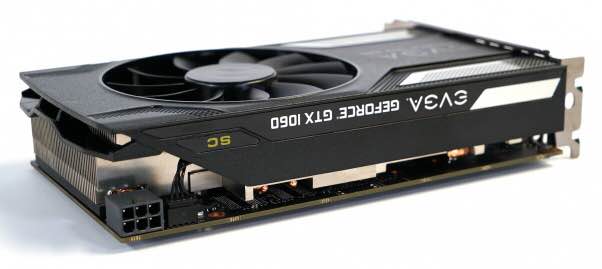GTX 1060
Technology ages quite well. Overtime, computer hardware parts have become more powerful and in some cases, cheaper. NVIDIA’s latest Pascal chip graphics card family, the 10 series, has proven to the gaming world that you can indeed experience quality game-play at a fair price. Casual and hardcore gamers alike will now be able to play on an even playing field without breaking the bank on extraordinary components. However, there has been much debate over the latest release of the 10 series GPU’s; the GTX 1060 3gb VRAM edition that has reached shelves in a stealthy fashion. I decided to pick one up and try it on my own rig.
Here’s what the 1060 does right; it’s form-factor-friendly size allows for flexibility in a majority of gaming chassis without the need to create space for airflow. It’s design is similar to the other family of EVGA cards, with respect to the even smaller ZOTAC mini factor, making the 1060 a very handy card for smaller cases. Based on 3D Benchmarks, and FPS averages across all major titles, the card pairs up well against its’ big brothers, the GTX 1070 and 1080. A small heat sink is fashioned onto the slick design of the graphic card and away you go into virtual conquest.
Here’s where I see pitfalls. The 3gb version of the GTX 1060 has been criticized for being less powerful than its’ competing sub-$200 graphic card, the Radeon RX480. With VR Ready capabilities, games have projected to utilize more virtual memory on cards, rending the 3 gigabyte space to be a potential bottleneck in the future.
Additionally, with new technology, it often requires new maintenance capability. The EVGA GTX 1060 3gb version is equipped with a heat sink similar to the one used on the previous 900 series graphics card. Meaning, the newer chips are being maintained by an older cooling fan, which in some cases doesn’t have to pose a problem in overheating. The GTX 1060 does throttle the peak performance once it hits around 83 degrees celsius, preventing further problems from damaging the card and overheating components in the computer itself. The fan is loud; for those who like to game in the dark with no souls around a 30 foot radius, this could become quite cumbersome.
Overall, the card is great for the cost. At $199.99, you’re really paying for a BMW at a Honda Civic price. If you’re wanting to upgrade to more VRAM, the GTX 1060 also offers a 6 gigabyte variant for those who are more gaming savvy and will see the subtle differences. Finding the GTX 1060 online has been challenging. With such high demand, retailers on Amazon.com have flipped the price for the graphics card and left the 3 gigabyte version on the shelf for the taking. For those who are looking for a solid upgrade from anything older than the 700 series, I would highly recommend considering purchasing the GTX 1060, in either capacity of VRAM. At max settings, the 3 gigabyte version held a steady 82 degrees and maintained high quality gameplay at the expense of an annoying buzzing radiating from my computer.

